 W
WAppScale is a software company offering cloud infrastructure software and services to enterprises, government agencies, contractors and third party service providers. The company commercially supports one software product, AppScale ATS, a managed hybrid cloud infrastructure software platform that emulates the core AWS APIs. In 2019, the company ended commercial support for its open-source serverless computing platform AppScale GTS, however its source code remains freely available to the open-source community.
 W
WChef is a company and the name of a configuration management tool written in Ruby and Erlang. It uses a pure-Ruby, domain-specific language (DSL) for writing system configuration "recipes". Chef is used to streamline the task of configuring and maintaining a company's servers, and can integrate with cloud-based platforms such as Amazon EC2, Google Cloud Platform, Oracle Cloud, OpenStack, IBM Cloud, Microsoft Azure, and Rackspace to automatically provision and configure new machines. Chef contains solutions for both small and large scale systems, with features and pricing for the respective ranges.
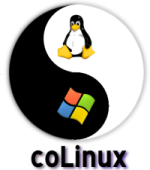 W
WCooperative Linux, abbreviated as coLinux, is software which allows Microsoft Windows and the Linux kernel to run simultaneously in parallel on the same machine.
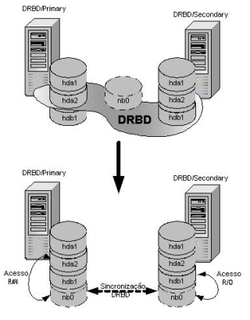 W
WDRBD is a distributed replicated storage system for the Linux platform. It is implemented as a kernel driver, several userspace management applications, and some shell scripts. DRBD is traditionally used in high availability (HA) computer clusters, but beginning with DRBD version 9, it can also be used to create larger software defined storage pools with a focus on cloud integration.
 W
WELinOS is a commercial development environment for embedded Linux. It consists of a Linux distribution for the target embedded system and development tools for a development host computer. The development host computer usually is a standard desktop computer running Linux or Windows. The Linux system and the application software for the target device are both created on the development host.
 W
WGaneti is a virtual machine cluster management tool originally developed by Google. The solution stack uses either Xen, KVM, or LXC as the virtualization platform, LVM for disk management, and optionally DRBD for disk replication across physical hosts or shared storage for external replication. Since 2007 Ganeti is developed and released as free and open-source software. Originally subject to the requirements of the GNU General Public License (GPL) version 2, the license was changed to the 2-clause BSD license in version 2.11.6, released September 2014.
 W
WGNOME Boxes is an application of the GNOME Desktop Environment, used to access virtual systems. Boxes uses the QEMU, KVM, and libvirt virtualization technologies.
 W
WKernel-based Virtual Machine (KVM) is a virtualization module in the Linux kernel that allows the kernel to function as a hypervisor. It was merged into the mainline Linux kernel in version 2.6.20, which was released on February 5, 2007. KVM requires a processor with hardware virtualization extensions, such as Intel VT or AMD-V. KVM has also been ported to other operating systems such as FreeBSD and illumos in the form of loadable kernel modules.
 W
Wlibvirt is an open-source API, daemon and management tool for managing platform virtualization. It can be used to manage KVM, Xen, VMware ESXi, QEMU and other virtualization technologies. These APIs are widely used in the orchestration layer of hypervisors in the development of a cloud-based solution.
 W
WLinux-VServer is a virtual private server implementation that was created by adding operating system-level virtualization capabilities to the Linux kernel. It is developed and distributed as open-source software.
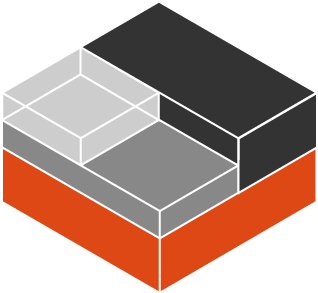 W
WLXC is an operating-system-level virtualization method for running multiple isolated Linux systems (containers) on a control host using a single Linux kernel.
 W
WMarionnet is a virtual network laboratory: it allows users to define, configure and run complex computer networks without any need for physical setup. Only a single, possibly even non-networked Linux host machine is required to simulate a whole Ethernet network complete with computers, routers, hubs, switches, cables, and more Support is also provided for integrating the virtual network with the physical host network.
 W
WOpenNebula is a cloud computing platform for managing heterogeneous distributed data center infrastructures. The OpenNebula platform manages a data center's virtual infrastructure to build private, public and hybrid implementations of Infrastructure as a Service. The two primary uses of the OpenNebula platform are data center virtualization and cloud deployments based on the KVM hypervisor, LXD system containers, and AWS Firecracker microVMs. The platform is also capable of offering the cloud infrastructure necessary to operate a cloud on top of existing VMware infrastructure. In early June 2020, OpenNebula announced the release of a new Enterprise Edition for corporate users, along with a Community Edition. OpenNebula CE is free and open-source software, released under the Apache License version 2. OpenNebula CE comes with free access to maintenance releases but with upgrades to new minor/major versions only available for users with non-commercial deployments or with significant contributions to the OpenNebula Community. OpenNebula EE is distributed under a closed-source license and requires a commercial Subscription.
 W
WOpenStack is a free, open standard cloud computing platform. It is mostly deployed as infrastructure-as-a-service (IaaS) in both public and private clouds where virtual servers and other resources are made available to users. The software platform consists of interrelated components that control diverse, multi-vendor hardware pools of processing, storage, and networking resources throughout a data center. Users manage it either through a web-based dashboard, through command-line tools, or through RESTful web services.
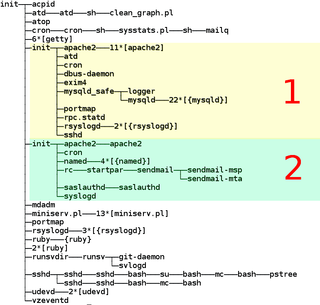 W
WOpenVZ is an operating-system-level virtualization technology for Linux. It allows a physical server to run multiple isolated operating system instances, called containers, virtual private servers (VPSs), or virtual environments (VEs). OpenVZ is similar to Solaris Containers and LXC.
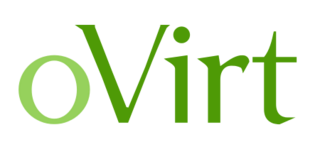 W
WoVirt is a free, open-source virtualization management platform. It was founded by Red Hat as a community project on which Red Hat Enterprise Virtualization is based. It allows centralized management of virtual machines, compute, storage and networking resources, from an easy-to-use web-based front-end with platform independent access. KVM on x86-64 and PowerPC64 architecture are the only hypervisors supported, but there is an ongoing effort to support ARM architecture in the future releases.
 W
WIn computing, Puppet is a software configuration management tool which includes its own declarative language to describe system configuration. It is a model-driven solution that requires limited programming knowledge to use.
 W
WRudder is an open source audit and configuration management utility to help automate system configuration across large IT infrastructures. Rudder relies on a lightweight local agent installed on each managed machine.
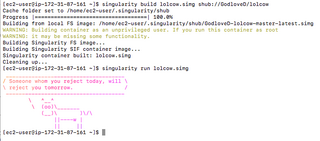 W
WSingularity is a free, cross-platform and open-source computer program that performs operating-system-level virtualization also known as containerization.
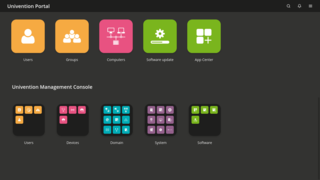 W
WUnivention Corporate Server (UCS) is a server operating system derived from Debian with an integrated management system for the central and cross-platform administration of servers, services, clients, desktops and users as well as virtualized computers operated in UCS. In addition to the operation of local, virtual instances, UCS can also be operated in cloud environments. Via the integration of the open source software Samba 4, Univention also supports the functions provided in many companies by Microsoft Active Directory for the administration of computers operated with Microsoft Windows. UCS-based components and UCS-certified, third party products can be installed via the Univention App Center. UCS provides all App Center applications with a runtime environment and services for the operation including a central, consistent management of the apps. Docker containers can also be run on UCS systems and several of the apps available in the App Center are Docker-based.
 W
WVagrant is an open-source software product for building and maintaining portable virtual software development environments; e.g., for VirtualBox, KVM, Hyper-V, Docker containers, VMware, and AWS. It tries to simplify the software configuration management of virtualization in order to increase development productivity. Vagrant is written in the Ruby language, but its ecosystem supports development in a few other languages.
 W
WIn computing, the Red Hat Virtual Machine Manager, also known as virt-manager, is a desktop virtual machine monitor.
 W
WOracle VM VirtualBox is a free and open-source hosted hypervisor for x86 virtualization, developed by Oracle Corporation. Created by Innotek, it was acquired by Sun Microsystems in 2008, which was in turn acquired by Oracle in 2010.
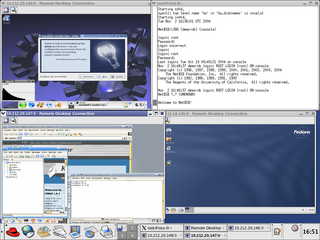 W
WXen is a type-1 hypervisor, providing services that allow multiple computer operating systems to execute on the same computer hardware concurrently. It was originally developed by the University of Cambridge Computer Laboratory and is now being developed by the Linux Foundation with support from Intel, Citrix, Arm Ltd, Huawei, AWS, Alibaba Cloud, AMD, Bitdefender and epam.
 W
WXtratuM is a bare-metal hypervisor specially designed for embedded real-time systems available for the instruction sets LEON2/3/4 and ARM v7 processors.